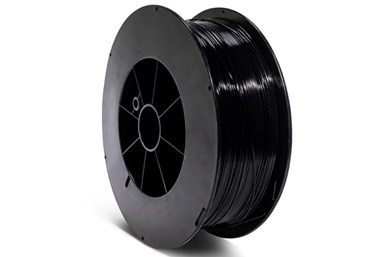Essentium Polycarbonate Material Withstands Extreme Cold Temperatures
The Altitude polycarbonate (PC) material can be used on any open-source 3D printer, enabling users to rapidly produce parts that can withstand cold temperatures on-demand — saving money, reducing waste and streamlining supply chains.
Share
Read Next
Essentium’s Altitude material is the first in its series of filaments designed for outdoor use. The company says this polycarbonate (PC) material is the first 3D printing filament to withstand cold temperatures as low as -60°C without cracking, making it well suited for use in a range of applications that require extreme cold, ultraviolet and flame resistance.
The material’s extreme cold resistance properties also make it suitable for high-altitude applications such as drones and drone bodies, as well as outdoor housing, panel covers, electrical and transformer housings and covers, electrical line protections and outdoor maintenance. The material is also well suited for use in cold outdoor environments in countries such as Norway and Alaska.
The material can be used on any open-source 3D printer, including the Essentium High-Speed Extrusion (HSE) 180 and HSE 280i 3D printing platforms. This gives industry players an opportunity to rapidly produce parts that can withstand cold temperatures on-demand, saving money, reducing waste and streamlining supply chains.
The material complies with Essentium's certificate of conformance, which provides individual spool traceability through the ISO and AS9100 quality process.
“We are excited to introduce Essentium Altitude, our latest innovative material that drastically expands the usability of 3D printing for outdoor and high-altitude applications,” says Nirup Nagabandi, Ph.D., Essentium vice president of materials engineering. “Engineered to withstand extreme cold, ultraviolet rays and flames, Essentium Altitude sets a new standard for high-performance parts in industries such as aerospace, automotive, cold storage, maintenance, and construction. We will continue working with our partners and customers to drive a step-change in polymer advancement, enabling manufacturers to use AM for applications never imagined.”
- Read how Essentium’s is Parts On Demand (EPOD) service unlocks access to innovative AM technologies to boost speed, scale and cost-efficiency for parts production.
- Check out this post on Essentium’s development of metal additive manufacturing capabilities for industrial-scale production enabling metal parts production at a new level of speed, scale and economics.
- Learn how Essentium helped fast-track design and production of Worlds Protect kiosks for convenient mass screening of COVID-19 and other infectious diseases.
Related Content
-
What Does Additive Manufacturing Readiness Look Like?
The promise of distributed manufacturing is alluring, but to get there AM first needs to master scale production. GKN Additive’s Michigan facility illustrates what the journey might look like.
-
Understanding PEKK and PEEK for 3D Printing: The Cool Parts Show Bonus
Both materials offer properties desirable for medical implants, among other applications. In this bonus episode, hear more from Oxford Performance Materials and Curiteva about how these companies are applying PEKK and PEEK, respectively.
-
FDA-Approved Spine Implant Made with PEEK: The Cool Parts Show #63
Curiteva now manufactures these cervical spine implants using an unusual 3D printing method: fused strand deposition. Learn how the process works and why it’s a good pairing with PEEK in this episode of The Cool Parts Show.
















